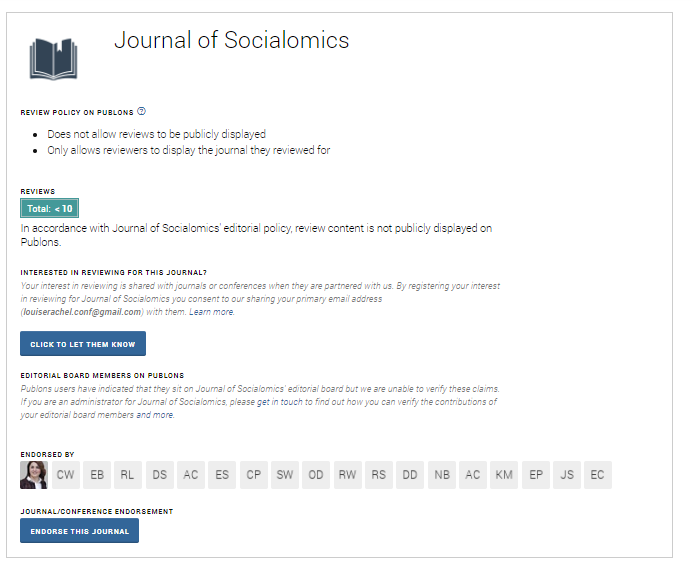Indexed In
- Open J Gate
- Genamics JournalSeek
- SafetyLit
- RefSeek
- Hamdard University
- EBSCO A-Z
- OCLC- WorldCat
- Publons
- Google Scholar
Useful Links
Share This Page
Journal Flyer

Open Access Journals
- Agri and Aquaculture
- Biochemistry
- Bioinformatics & Systems Biology
- Business & Management
- Chemistry
- Clinical Sciences
- Engineering
- Food & Nutrition
- General Science
- Genetics & Molecular Biology
- Immunology & Microbiology
- Medical Sciences
- Neuroscience & Psychology
- Nursing & Health Care
- Pharmaceutical Sciences
Commentary Article - (2025) Volume 14, Issue 2
Collective Action and Digital Mobilization in Latin American Cities
Diego Alvarez*Received: 26-May-2025, Manuscript No. JSC-25-29739; Editor assigned: 28-May-2025, Pre QC No. JSC-25-29739; Reviewed: 11-Jun-2025, QC No. JSC-25-29739; Revised: 18-Jun-2025, Manuscript No. JSC-25-29739; Published: 25-Jun-2025, DOI: 10.35248/2167-0358.25.14.266
Description
In recent years, digital platforms have become central to how political mobilization unfolds in Latin American urban centers. Movements that once required weeks or months of planning now organize demonstrations, strikes, and awareness campaigns within days. The infrastructure of social media, messaging apps, and community forums has allowed individuals and groups to coordinate with unprecedented speed. These tools have not only accelerated the pace of action but also redefined participation by lowering traditional entry barriers. Now, involvement can range from physically attending an event to resharing a post or joining a digital protest from home.
Despite this ease of access, collective action in digital spaces presents both opportunities and limitations. On one hand, activists are able to bypass conventional media filters and reach wide audiences with direct messages. On the other, digital visibility does not always translate into offline results. While hashtags may trend globally, they can also disappear quickly from public view. This creates an unpredictable environment where momentum is difficult to sustain, especially in the absence of cohesive leadership or organizational infrastructure. Movements built online often struggle with internal disagreements, unclear goals, or uneven participation.
Urban spaces offer a unique context for digital mobilization. Dense populations and diverse demographics create fertile ground for shared grievances to gain traction. Economic disparity, access to public services, housing shortages, and political corruption are common themes across many cities in the region. These shared conditions make digital organizing especially relevant, as individuals who may not interact in person can still coordinate around common interests. In this sense, cities serve as both the subject and the site of activism. Messages are created with local urgency but can resonate far beyond the immediate community.
Trust and credibility remain essential in this environment. While the internet allows for rapid communication, it also carries the risk of misinformation and manipulation. Some movements have been weakened by false narratives, internal sabotage, or misinterpretation of their objectives. Others have suffered from infiltration by opposing forces seeking to monitor or disrupt their strategies. As a result, digital mobilization often operates in a space of caution. Activists vet new members carefully, shift conversations to encrypted platforms, and vary their tactics to avoid detection. The openness of digital tools becomes a double-edged aspect offering reach, but requiring constant vigilance.
The influence of language and symbols is also notable. Many digital movements rely heavily on visual content images, graphics, short videos to communicate ideas quickly and emotionally. These artifacts become identifiers of collective identity and are easily shared across platforms. In Latin America, where visual culture has deep roots in muralism, protest art, and symbolic resistance, this digital evolution reflects continuity as much as innovation. However, the speed at which images circulate can also lead to superficial engagement, where content is consumed rapidly but without deeper understanding or follow-through.
Another important factor is the role of youth. Younger generations, often more fluent in digital expression, have taken the lead in organizing protests, producing content, and shaping discourse. Their digital literacy allows them to connect not only within their cities but across national borders. Solidarity movements now extend to diaspora communities and international allies, expanding the impact of local struggles. However, this age dynamic can also create friction with older activists who may rely on more traditional methods. Bridging generational differences remains a challenge in many grassroots efforts.
Conclusion
The evolution of collective action in Latin America reflects a complex mix of urgency, creativity, and adaptation. Digital tools have altered the scale and style of mobilization but have not replaced the fundamental challenges of organizing: sustaining commitment, building alliances, and navigating resistance. While not every effort results in policy change, the increased awareness and involvement are significant. People who once felt disconnected from public decision-making now find ways to participate, even if only incrementally. These efforts continue to reshape how civic life is experienced, especially in cities where power is contested daily through both physical and digital means.
Citation: Alvarez D (2025). Collective Action and Digital Mobilization in Latin American Cities. J Socialomics. 14:266.
Copyright: © 2025 Alvarez D. This is an open-access article distributed under the terms of the Creative Commons Attribution License, which permits unrestricted use, distribution and reproduction in any medium, provided the original author and source are credited.


